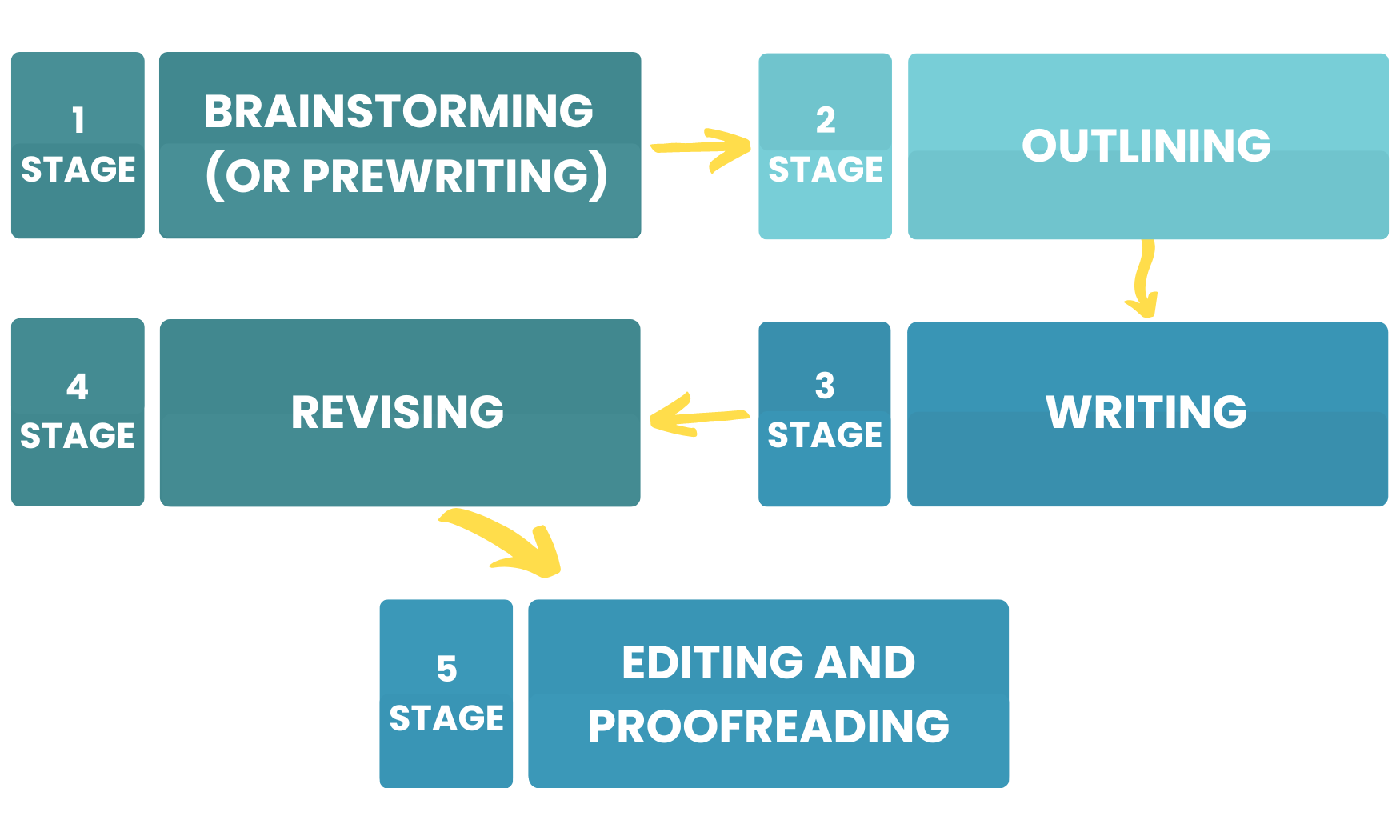How to Approach the Academic Writing Process
Table of contents
If you want to write a high-quality piece of academic writing, the preparation stage is a must. You will need to think of a good plan before you start writing. To write a good text be ready to take your time and plan, write a draft, and proofread/edit the text.
The writing process is not the same for anyone, there is no such thing as the perfectly structured process that would work for anyone. There is, however, a general strategy you should consider when approaching any piece of academic writing. The main stages of the writing process include:

Prewriting
You must first choose the topic of your writing and conduct some basic research before you begin writing. Then you should find a topic of your research. The greatest technique to come up with a writing topic is to set aside some time to think about the question: What should I write about? And don’t just pick a wide and vague formulating for your topic, you should narrow it down and focus on a few aspects of it.
For example:
- ❌ Art in the 18th-Century Paintings of the Rococo period —>
- ❌ The paintings of Jean-Honoré Fragonard —>
- ✔️ Analysis of "The Swing" by Jean-Honoré Fragonard.
Once you have settled on one particular topic, you can practice brainstorming and freewriting. These two are the best methods to start writing – just start somewhere and write everything that comes to mind. No need to worry about mistakes or whether it is good enough, you can think about that later. At this stage, you need just to start writing.
After that, you should find credible and reliable sources of research in your local library or on the Internet. It is always good to take notes when you scan your reference literature. When you are done reading and feel like you know enough to move to the next thing – organize your notes so that you can structure the information you have in the most useful way for you. And finally, you should add your own thoughts and judgments to your outline.
Outlining
It's critical to employ a logical structure to present collected data, especially in academic writing. It's much better to plan ahead of time than to try to figure out your strategy after you've started writing.
You can arrange your notes based on the labels that describe what they're about. Look for connections between the objects. Then try to think about how you can back up your thesis with your notes. Organize your notes such that they begin with your thesis and then support it with each piece that follows. Include citations while you're at it.
Making a plan for your essay is a good approach to layout your strategy as you begin writing. This should assist you in determining the primary points you want to emphasize and how you'll arrange them. It's fine if your layout changes during the writing process; the plan doesn't have to be finished.
Writing
It's time to write a whole first draft once you've figured out your structure. If you are not sure where to start from there – start anywhere. You can, for example, start writing your text with the main body and save the introduction until you have a better understanding of the material you're presenting.
Concentrate on writing down your thoughts in a logical manner. Also, you should include citations in your first draft so you remember to add them when revising. One more great piece of academic writing advice is to take frequent breaks.
Write for 20 minutes, then take a 10-minute break, and repeat that till you've completed your draft. While this method is preferred by many, any methodology that involves setting apart time to write and then time to relax is beneficial.
Revising
Redrafting involves noticeably adding or eliminating information, whereas revising implies making structural modifications and reshaping your ideas. This is the stage where you go through your text once or twice more and delete or rewrite everything you see as wrong or not fitting.
You should look for anything you think is illogical and bad-formulated. It is best to eliminate gaps in presented information if you have any. When you read the text it should be flowing in your mind so that you can easily understand your statement and judgment. If, however, it is not – scan your text for mistakes and think of how you can fix them.
At this stage, you can also rearrange certain parts of the text or add some new information if you like. You make all kinds of changes in your text until you're satisfied with the final draft.
Editing and proofreading
When you edit your paper, thesis, or other projects, you are polishing it. It's about paying attention to the little things that make your writing grammatically correct and understandable. Topical issues such as readability and sentence structure are handled during editing. Proofreading means carefully examining the material for mistakes and stylistic coherence.
The very same things apply to editing and proofreading academic writing as they do to other types of writing: sentence structure and complexity, grammar, syntax, and vocabulary. It also requires looking for missing words, unclear terminology, and illogical vocabulary.
In the end, you can have a bunch of badly constructed sentences in your first draft. Examine where your message could be communicated more effectively or with fewer words.
For example:
- ❌ It can be said that Fragonard`s paintings quite often eliminate playfulness and a strong merry feeling.
- ✔️ Fragonard`s paintings portray scenes that are often described as “playful”.
And finally, you will have to read specific guidelines to format your text properly. Also, don’t forget the citations – always remember to give credit to other authors, whose research helped you in writing the text.
